
Become a member
Join today and help protect nature, beauty and history – for everyone, for ever. Enjoy access to more than 500 places with National Trust membership.
National Nature Reserve (NNR) and Site of Special Scientific Interest ( SSSI). Home to an internationally significant breeding colony of seabirds and Atlantic grey seals.
Near Seahouses, Northumberland, For Sat Nav use NE68 7RQ
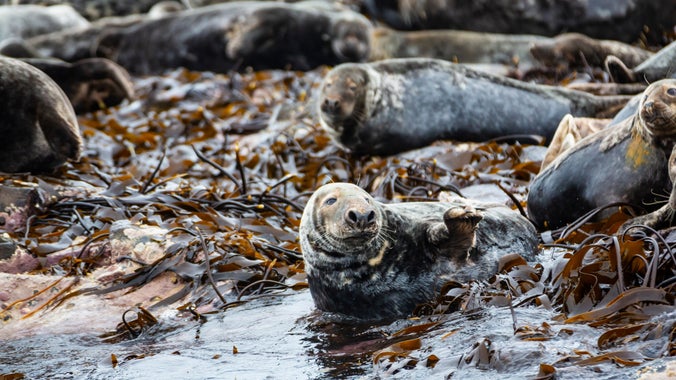
| Asset | Opening time |
|---|---|
| Inner Farne | Closed |
| Shop | 10:00 - 15:00 |
To protect nesting seabirds on Inner Farne, visitor access may be restricted when rainy weather is forecast. Please note when booking that your trip could be cancelled due to weather conditions. We understand this can be disappointing but seabird conservation is our top priority. If landings are not possible, you may still enjoy a sail-around boat trip. For details, please contact local boat operators. Thank you for supporting our wildlife protection and conservation work.
| Ticket type | With Gift Aid | Without Gift Aid |
|---|---|---|
| Adult (18+) | £13.00 | |
| Child (5-17) under 5s free | £6.50 | |
| Family (2 Adults and up to 3 children) | £32.50 | |
| Family 1 Adult | £19.50 |
| Ticket type | With Gift Aid | Without Gift Aid |
|---|---|---|
| Adult (18+) | £17.00 | |
| Child (5-17) under 5s free | £8.50 | |
| Family (2 Adults and up to 3 children) | £42.50 | |
| Family 1 Adult | £25.50 |
Inspire the next generation of nature lovers - incredible wildlife and an exciting boat ride. Boardwalk is suitable for buggies.
Picnic benches available with one of the best views in Northumberland. Next to the lighthouse.
In Seahouses village. No shop on Inner Farne.
Limited toilet facilities on Inner Farne.
Inner Farne has a boardwalk around the island. Due to the very sensitive nature of the colony, no dogs (including assistance dogs) are allowed on the Islands. Toilets on Inner Farne.
In Seahouses village. No shop on Inner Farne.
Boardwalk on Inner Farne.
Next to the lighthouse and St Cuthbert's Chapel.
Boardwalk on Inner Farne. Uneven terrain at the Lighthouse cliffs. Uneven terrain on the Jetty. Steps to boat at the harbour depending on departure / arrival location.
Near Seahouses, Northumberland, For Sat Nav use NE68 7RQ
Inner Farne is now closed for landings until 1 April 2026. To sail around the Farne Islands, or land on Inner Farne you need to catch a boat from Seahouses harbour. It's recommended that you book your boat trip in advance. Read on to find out how to book and what to expect from your trip, and things to think about as you plan your visit.

We’ve put together some guidelines for you to follow to make sure the wildlife stays safe when you visit, plus tips for taking photos without disturbing the seabirds.

Find out why dogs (including assistance dogs) aren't allowed on Inner Farne or Staple Island, and where else you can take your dog on the Northumberland Coast.

With links to St Cuthbert who spent the last years of his life living on Inner Farne as a hermit, and the tranquil St Cuthbert's Chapel with it's 17th Century wood carvings and beautiful stained glass window, there is a wealth of history here to discover. Visit during a landing trip to Inner Farne April - September.
Catch a boat from the harbour at Seahouses and sail around the Farne Islands to get a close look from the water at the thousands of birds and seals that come here to breed each year. Look out for curious seals popping their heads above the water or lounging on the rocks, stare up in wonder at cliffs jam packed with breeding birds and, if you're very lucky, you may spot dolphins from the boat.
This National Nature Reserve just off the Northumberland Coast is home to a large colony of Atlantic grey seals and, in early summer, around 200,000 breeding seabirds. The colourful and charismatic Puffins are arguably the stars of the show, with 43,000 pairs breeding here. Add to this the Sandwich and Arctic terns, eider ducks and cliffs packed with guillemots, razorbills and shags; This special place is host to one of the best wildlife spectacles in the UK. Please note that the birds are here May - July only.
The home of local heroine Grace Darling, take a boat trip that lands on the island and explore the iconic red and white lighthouse on a guided tour. Only one boat operator takes trips to this island - find out more by contacting Golden Gate Farne Islands Boat Trips.
Pop into the shop in Seahouses before or after your boat trip round the Farne Islands for puffin souvenirs, postcards, homewares, gardening tools, books and more.
April - September Visitors can book a landing trip to Inner Farne and walk amongst the thousands of seabirds that return here to breed every spring To visit the colony during the breeding season ( May - July) is an unforgettable and awe inspiring wildlife experience. National Trust members land for free, a separate boat ticket fee applies.
Inner Farne is now closed for landings and will reopen on 1st April 2026. Find out what you might see when you take a boat trip to the Farne Islands, from wildlife such as puffins and grey seals, to centuries-old buildings including St Cuthbert's Chapel.

Learn about the grey seal colony on the Farnes, as well as other seals that call the Islands home.

Whether you're looking for a souvenir to take home or a present for a loved one, make sure you stop by the shop in the centre of Seahouses. The shelves are bursting with gifts. Find colourful throws made from upcycled wool, home accessories inspired by nature, colourful handmade jewellery and prints by local artists. There are books for all ages and toys inspired by the great outdoors too.
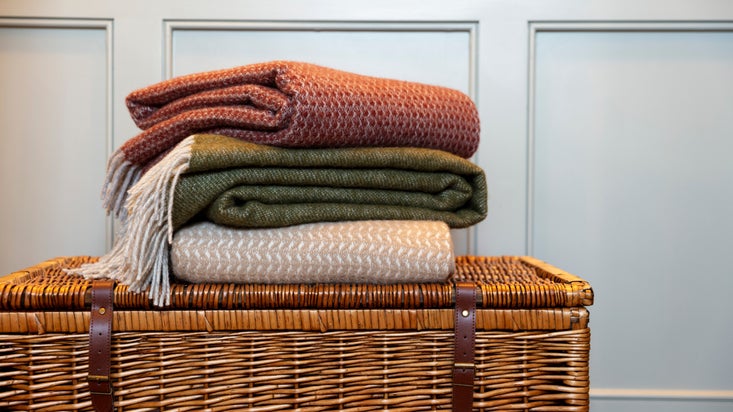

A former lookout, this simple but snug cottage is next to a HM Coastguard radio room.

A former fisherman’s cottage next to a cosy pub with sea views and a bright, contemporary living space.

Close to the sands of Embleton Bay, this coastal cottage is a great spot for wildlife watching.

A Grade II listed cottage on Holy Island, designed by Lutyens, reached by crossing a tidal causeway.

Explore Holy Island from this comfortable cottage, just half a mile from Lindisfarne Castle.
Sorry, there are no upcoming events at this place
The Farne Islands are a National Nature Reserve and Site of Special Scientific Interest.
Breeding seabirds
This place is home, during the summer months, to one of the most significant breeding seabird colonies in the UK.
Visitors can expect unrivalled views of the 200,000 seabirds of 23 different species, including approx 43,000 pairs of puffin, that journey here every year to raise their chicks.
Seals
The islands are an important pupping site for the Atlantic grey seal, with more than 2,000 pups born here every autumn.
History
This is also a place of significant cultural heritage, with strong links with early Celtic Christianity and St Cuthbert; He lived here as a hermit in the 7th century.
Explore inside the medieval St Cuthbert's chapel.
Victorian Lighthouse.
A short boat trip to a different world.
Annual bird counts on the Farne Islands have revealed a mixed picture for the internationally important seabird colonies two years after several species were severely impacted by an outbreak of Avian Influenza.
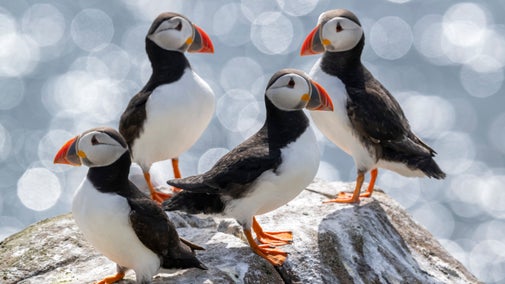
Find out more about how we care for Farne Islands in Northumberland, from repairing the boardwalks to surveying seals and ringing birds to track their movements.
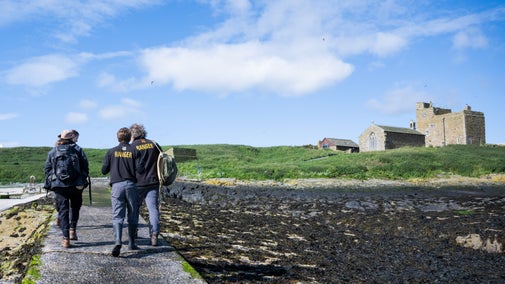
As we celebrate a century of caring for the Farne Islands, this article takes a look back at our history, how conservation has changed, and how the next 100 years may look.
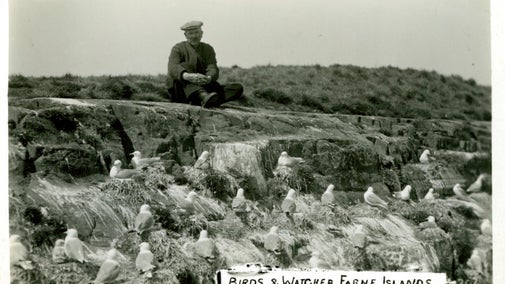
Our new nature series, The Wild Life, is full of inspirational stories about protecting wildlife and harnessing the power of nature in a changing climate. Join our presenters as they explore five places in our care to find out how the climate crisis is affecting oceans, rivers, woodlands and grasslands.

Discover our kids' podcast, Ranger Rae and the Wildlifers. Listen to stories where Ranger Rae, Apprentice Roxy and their seven animal friends go off on adventures to look after people and animals in trouble.
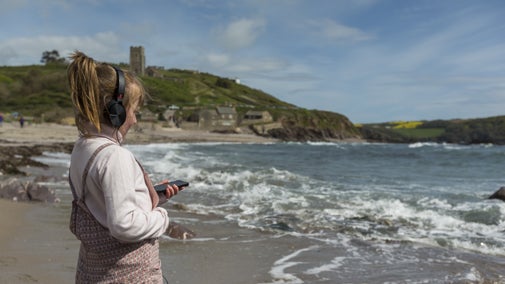
Many people have called the Farne Islands home over the centuries, from hermits and monks to soldiers, lighthouse keepers and even shipwrecked sailors.
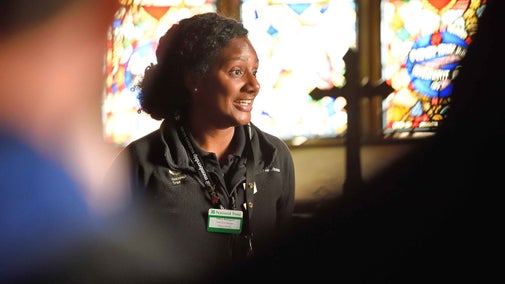
Discover how the Farne Islands have proved to be the ideal location for many structures over the centuries, from a monastery and chapels to a pele tower and several lighthouses.


Join today and help protect nature, beauty and history – for everyone, for ever. Enjoy access to more than 500 places with National Trust membership.
By sharing your email address you’re agreeing to receive marketing emails from the National Trust and confirm you’re 18 years old or over. Please see our for more information on how we look after your personal data.